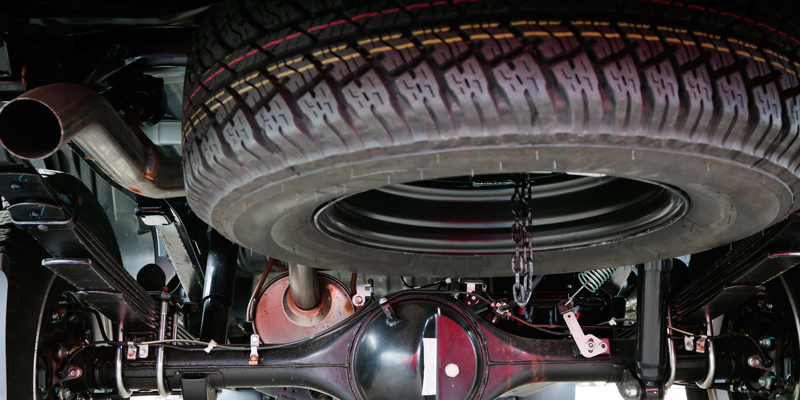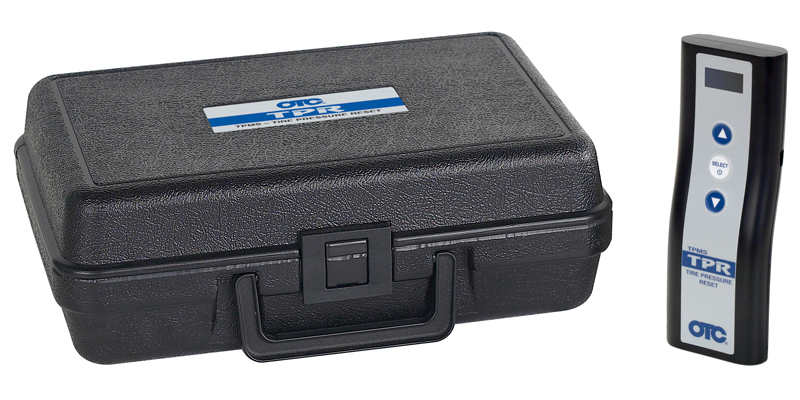Over the last decade, the introduction of tire pressure monitoring systems (TPMS) has revolutionized the way motorists, shops and manufacturers approach tire maintenance. The system provides a great safety benefit to motorists by alerting them of underinflated tires. Low tire pressure may lead to a blowout and vehicle crash. Improper installation or maintenance of TPMS sensors can create challenges for technicians and shops.
A dashboard TPMS warning light on a vehicle could be signaling one or multiple issues such as a dead or dying sensor battery, a system’s inability to communicate with all vehicle sensors or low pressure in one or more tires. Following the TREAD act, all vehicles model year 2008 and newer are required to be equipped with TPMS, which increases vehicle safety by monitoring tire pressure and communicating this information to the driver.
The first cycle of vehicles affected by the TREAD act, which includes the roughly 6.8 million new vehicles sold in the United States in 2008, are prime candidates for TPMS service as their sensors are beginning to reach the end of their 7-10 year life expectancy. With millions of vehicles expected to need TPMS sensor replacement, it’s important to know what is involved with the replacement, installation and relearn of TPMS sensors.
What’s Causing the Warning Light?
When investigating the cause of the TPMS warning light, start with a visual inspection. How old is the vehicle? Do the tires look low or flat? Is there physical damage on the sidewall, tread or rim?
Once you find the issue, it can be fixed. A tire may need air, repair or replacement, a rim may be damaged and need replacing or a sensor may be damaged or dead. Each time a tire is replaced or moved to a different position on the vehicle, or when installing new TPMS sensors, you may need to reprogram the system.
When replacing or recalibrating the sensors, manufacturers have created specific steps to put the vehicle in learn mode and program sensors. Some vehicles may relearn sensors automatically when tires are rotated. However, most TPMS sensors will require an action by you to relearn or reprogram them. To save time, a standalone or paired TPMS tool can be used to reset and relearn sensors quickly. Some tools will walk you through the relearn process. This includes putting the system in learn mode and reading each sensor. Some diagnostic scan tools will also include relearn procedures.
The Effects of Proper and Improper TPMS Maintenance
Your customer may see the TPMS dashboard light as an annoyance, but you can educate them on the importance of proper and improper TPMS maintenance.
The major benefits of TPMS maintenance are extended tire life and safety. The system ultimately saves time and money by helping maintain proper tire pressure for even wear, better fuel economy and extended tire life.
A broken TPMS may also lead to lower fuel economy. With properly maintained and inflated tires, your customers can get better gas mileage and spend less at the pump.
As mentioned above, improper inflation can have a catastrophic impact on vehicle safety, including tire breakdown and failure. Properly inflated tires can mean the difference between safe driving and a higher risk for accidents.
Common Mistakes
In comparison to other systems in today’s vehicles, TPMS is relatively straightforward. However, don’t overlook two factors in TPMS service – the spare tire and location of the sensor within each tire.
A spare tire typically remains forgotten, mounted to the frame or in the trunk, but for some TPMS systems, it’s a crucial factor in recalibration. If you don’t activate the sensor in the spare tire, the system will give a false read. Alternatively, an active sensor in the spare tire will be recognized by the vehicle, so it may be the source of the warning light as well. Always check the spare tire when servicing TPMS.
When changing a tire, you risk damaging a TPMS sensor. The highest danger is when you’re breaking the bead and removing the old tire, particularly when breaking the bead using a tool such as a pry bar. Use care when prying around the valve stem, where most modern-day sensors will be located.

Tips for Proper TPMS Service
If a customer is simply looking for you to turn off their TPMS light without fixing the underlying cause, this type of situation can create unnecessary liability for you and your shop. If you turn off the light without fixing the issue, you are violating the NHTSA’s “make inoperative” provision, which then leaves shops legally responsible for disabling the TPMS. It is your responsibility to explain this to your customer, and to refuse service if they decline to have the issue properly fixed.
If a single sensor has reached the end of its lifespan, it is highly recommended to replace all sensors at the same time. Similar to headlights, once one sensor dies, the rest are likely to be close behind. The same is true for a corroded valve stem or other non-impact sensor replacement. This is an important point for your customers to understand and can help you provide the best service for their vehicle. It also is a convenience to them.
For any motorists that swap their tires out for changing seasons, it’s crucial that the TPMS sensors are reactivated and recalibrated each time. If this is not done, the vehicle’s TPMS will not perform properly and may cause the TPMS light to turn on.
Tools for TPMS Service
TPMS is not going away. If you haven’t had to replace or relearn sensors before, you will in the future. A dedicated TPMS tool will help you and your shop from turning business away and allowing you to relearn and reprogram sensors faster.
Look for a tool with built-in reprogramming features so you’ll have all the information needed to complete the job quickly. One with an OBDII dongle can even put the vehicle into learn mode and wirelessly scan and relearn new sensors. Other tools can pair with your OTC diagnostic tools to relearn new sensors or work as a standalone tool. The right equipment can make the difference.













